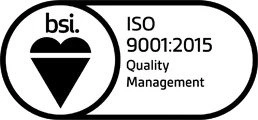
Both 3 and 5 Axis CNC machining can achieve accurate trimming and cutting capabilities and there is only one major difference between the two processes.
The main difference between 3 axis and 5 axis CNC machining is the number of axes the machine can operate. 3 axis CNC machining allows for rotation around three axis which are X, Y & Z whereas 5 axis CNC machining allows for a part to be rotated around five different axes which are X, Y, Z, anti-clockwise and clockwise.
3 axis machines are simpler to program and have a shorter prep time compared to 5 axis machines. However, with a 5 axis machine you’ll have greater accuracy, better freedom of movement and the ability to produce parts quicker than a 3 axis CNC machine.
3 Axis CNC machining is the more traditional machining method and, as the name suggests, works on 3 different axes: X, Y and Z. The 3 Axis CNC machining process removes material along these three basic axes and these three axes alone.
3 axis machining is a technology that helped paved the way for more efficient and accurate machining, machining that was able to handle complex shapes with better speed and efficient.
When using a 3 axis CNC machine, the material block remains fixed in position on a machine bed. The rotating drills or cutting tools are connected to a spindle which moves along 3 axis, X, Y and Z. The design is then cut to precise measurements. As the 3 axis CNC machine can only cut along three axes, it may struggle to perfect complex shapes or designs with narrow and deep cavities.
5 Axis CNC machining works on those same three axis, X, Y and Z, as well as two more; A and B. The A and B axes are the axes around which the cutting tool rotates allowing for more precise and more detailed cutting, trimming and finishing. With 5 Axis CNC machining, the plastic part being cut can be approached from all directions and worked on from five separate sides in a single operation.
5 axis CNC machining lets you approach the material block from all angles and also eliminates the need to manually reposition the workpiece between operations, whereas with 3 axis this will need repositioning.
Whilst the difference between the two processes is slight, it completely changes the types of parts they can be used for. For example 3 Axis CNC machining is more suited to flat, shallower and less complex parts but is often more time efficient.
Conversely 5 Axis CNC machining takes longer to complete but is ideal for deeper plastic parts that are more complex or require greater precision with the cuts being made.
3 axis and 5 axis machining are suitable for a range of industries, however they are best suited towards the aerospace, automotive and medical sectors. This is down to CNC machines being able to create complex parts that would be impossible to produce as these industries have designs that require specific measurements and exact results.
Our quality assurance team oversees a programme integrated into continuous development, testing, and production. When services and products are sub-contracted we verify that any parties involved are issued with a specification for compliance and meet our quality standards.

To further our promise of quality, we are ISO 9001:2015 accredited. Our quality management system assures you that our products will meet and exceed your quality requirements.
For more information about our CNC routing or CNC machining services or to arrange a free consultation to discuss your requirements, please contact Ansini today on 01623 812333 or email info@ansini.co.uk.
If you have a question for us, or would like to discuss a specific project, please do get in touch.